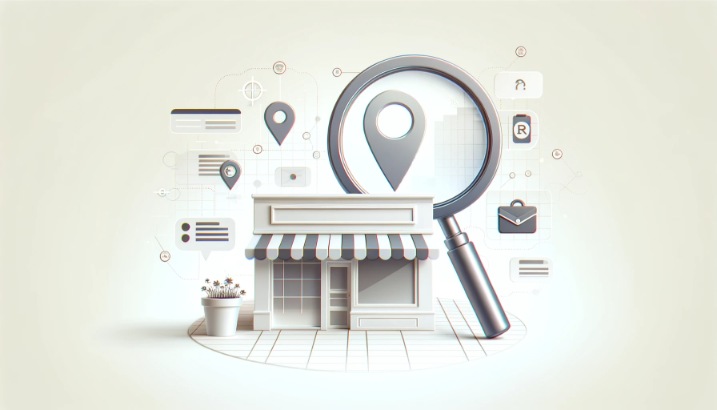Are you curious about the essential components of a graphic designing service? Let’s delve into the key elements of a Graphic Designing Service. Graphic design is all about the art of visual communication. Designers have a remarkable talent for transforming ideas into captivating visuals that convey a message effectively. They utilize their creativity to craft unique and eye-catching designs that leave a lasting impression on the audience. Additionally, graphic designers master the art of branding, using typography, color theory, and other design elements to establish a cohesive and recognizable identity for a brand. So, if you’ve ever wondered what goes into a graphic designing service, stick around to uncover the fascinating secrets behind this captivating craft.
Design
Design is the foundation of any graphic design service, encompassing the visual elements that convey a message or concept. The design process involves a series of steps that are crucial to creating effective and impactful designs. It starts with understanding the client’s needs and objectives, followed by research and brainstorming. During this phase, graphic designers gather inspiration and explore various ideas to create a design that aligns with the client’s vision.
Once the initial concept is developed, graphic elements such as typography, color schemes, and imagery are carefully chosen to enhance the message and evoke the desired emotions. These elements are strategically combined to create a visually appealing composition that effectively captivates the audience and communicates the intended message. The graphic design service can effectively convey and emphasize the client’s message or concept through these design elements.
Transitioning into the subsequent section about ‘creativity,’ the design process requires high creativity and innovation. Graphic designers must think outside the box and push boundaries to create unique and memorable designs. Creativity is crucial in capturing the audience’s attention and making a lasting impression.
Creativity
When it comes to graphic designing, creativity is vital. It is the driving force behind the designing process, allowing the graphic designer to think outside the box and develop unique and innovative ideas. Without creativity, graphic design would be unable to captivate and engage the audience, making it an essential element in any graphic design service.
Designing Process Explained
You will continuously explore and unleash your creativity during the graphic design process. Designing techniques and principles will guide you in creating visually appealing and practical designs. First, you must understand the design brief and the project’s goals. This will help you determine the target audience and the message you want to convey. Next, you can start brainstorming and sketching ideas to generate various concepts. Once you have strong ideas, you can refine them by experimenting with color, typography, layout, and imagery. To create a harmonious and visually pleasing composition, the design principles, such as balance, contrast, and hierarchy, must be kept in mind. Finally, you can present your designs to the client and make any necessary revisions based on their feedback. Remember, designing is a creative journey that allows you to push boundaries and bring your ideas to life.
Role of Graphic Designer
A graphic designer is crucial in bringing creativity to a graphic design service. They are responsible for crafting visually appealing designs that effectively communicate the message of a brand or project. The importance of visual elements cannot be overstated, as they capture the audience’s attention and leave a lasting impression. Here are three critical ways in which a graphic designer contributes to the creative process:
- Conceptualization: Graphic designers use their artistic skills and imagination to conceptualize unique, innovative designs that align with the client’s vision and goals.
- Layout and Composition: They carefully arrange visual elements such as images, colors, typography, and graphics to create a pleasing and harmonious composition.
- Branding and Identity: Graphic designers play a vital role in developing and maintaining a brand’s identity by creating consistent visual assets that reflect the brand’s values and personality.
The role of a graphic designer is essential in elevating the visual appeal and effectiveness of a graphic design service.
Visual Communication
How can visual communication enhance your graphic design service? Visual communication is crucial in creating effective graphic designs that resonate with your target audience. Using visuals such as images, colors, and typography, you can convey your message visually appealing and impactfully. In digital marketing, where attention spans are short, visual communication can capture the user’s attention and convey information quickly and efficiently.
Visual communication also contributes to a positive user experience. By utilizing clear and intuitive visuals, you can guide users through your design and enhance their understanding of your message. This improves their overall experience with your brand and increases their likelihood of engaging with your content or taking the desired action.
Furthermore, visual communication is essential for branding. The visual elements in your designs, such as a logo, color scheme, and typography, help create a recognizable and cohesive brand identity. Consistency in visual communication across various platforms and materials establishes trust and familiarity with your audience.
Branding
To establish a strong brand identity and effectively communicate your message, it is essential to incorporate critical graphic design elements. Branding plays a crucial role in shaping how your audience perceives your business. Creating a cohesive brand identity can build customer trust, recognition, and loyalty. One of the critical elements of branding is logo design, which serves as the visual representation of your brand. A well-designed logo can instantly convey your brand’s personality and values, making it memorable and impactful. Another important aspect of branding is consistency. You can create a cohesive and recognizable brand identity using consistent visual elements like fonts, colors, and imagery across all your marketing materials. Lastly, storytelling is a powerful tool in branding. By crafting a compelling narrative that aligns with your brand values, you can engage your audience emotionally and create a lasting connection. Incorporating these elements into your graphic design strategy will help you establish a strong brand identity and effectively communicate your message to your target audience.
Typography
You frequently use typography as a critical element in graphic design services to enhance visual appeal and readability. Typography involves the art and technique of arranging type to make written language legible, readable, and visually appealing. It plays a crucial role in conveying the message and tone of your designs.
There are various typography styles. Serif fonts, with their small lines or decorative features at the end of letter strokes, convey a classic and elegant feel. On the other hand, Sans-serif fonts are more modern and clean, with no decorative strokes. Script fonts mimic handwriting and add a touch of elegance and sophistication to your designs.
Typography trends are constantly evolving, and it’s essential to stay updated. Minimalist typography is gaining popularity, with clean and straightforward fonts that create a sleek and modern look. Bold and expressive typography is also rising, adding impact and personality to designs.
As you explore typography options, remember that it should complement other design elements, such as layout, color, and imagery. Typography sets the tone and creates a visual hierarchy, guiding the viewer’s eye through the design.
Transitioning into the next section on color theory, understanding how typography and color work together can help you create harmonious and visually stunning designs.
Color Theory
When it comes to graphic designing services, understanding color theory is essential. You must know how primary color combinations work to create visually appealing designs. Additionally, it’s essential to consider the psychological effects of color on your audience and use colors strategically to evoke the desired emotions. Lastly, color symbolism in design can communicate specific messages and meanings, so knowing the cultural associations attached to different colors is crucial.
Primary Color Combinations
Understanding primary color combinations is essential for effective graphic design. You can create visually appealing designs that capture attention and convey the desired message by mastering primary colors. Here are three key aspects to consider when working with primary color combinations:
- Mixing primary colors: Explore the possibilities of combining red, blue, and yellow to create a wide range of secondary color combinations. Experiment with different ratios to achieve the desired shades and hues.
- Color psychology: Understand the emotional and psychological impact of primary colors. Red can evoke passion and energy, blue can convey calmness and trust, while yellow can symbolize happiness and optimism. Utilize these associations to enhance the message of your design.
- Contrast and balance: Achieve balance by combining primary colors with their complementary colors. For example, red works well with green, blue with orange, and yellow with purple. This contrast creates visual interest and ensures your design stands out.
Psychological Effects of Color
To fully grasp the impact of primary color combinations in graphic design, it is crucial to delve into the psychological effects of color, also known as color theory. Color has a significant emotional impact on individuals and can significantly influence consumer behavior. Different colors evoke different emotions and can create specific associations in the minds of consumers. For example, warm colors like red and orange evoke excitement and passion, while cool colors like blue and green are often associated with calmness and tranquility. Understanding the psychological effects of color allows graphic designers to strategically choose colors that align with their target audience’s desired emotional response and behavior. With this knowledge, designers can effectively communicate messages and create visually appealing designs. In the subsequent section about color symbolism in design, let’s explore how specific colors are often used to convey deeper meanings and associations.
Color Symbolism in Design
Now, let’s delve into how color symbolism in design is crucial in conveying deeper meanings and associations. Understanding color psychology and cultural influences is essential to creating compelling designs. Here are three ways color symbolism can impact design:
- Red: This color is often associated with passion, excitement, and energy. It can create a sense of urgency or draw attention to essential elements in a design.
- Blue: Blue is commonly linked to calmness, trust, and reliability. It can create a sense of stability and security, making it suitable for corporate designs.
- Yellow: Symbolizing happiness, optimism, and youthfulness, yellow can evoke feelings of joy and positivity. It is often used in designs to grab attention or convey a lighthearted message.
Frequently Asked Questions
To Summarize, What Are the Key Elements of a Graphic Designing Service?
The key elements of a Graphic Designing Service include creative conceptualization, proficient use of typography and color theory, expertise in layout and composition, mastery of various design software, and a deep understanding of client needs and branding strategies for effective visual communication.
How Long Does It Take to Complete a Graphic Design Project?
Depending on the complexity and scope, it typically takes a few weeks to complete a graphic design project. The design process involves brainstorming, sketching, creating drafts, revisions, and finalizing the design.
What Software Is Commonly Used in Graphic Design?
Standard graphic design software includes Adobe Photoshop, Illustrator, and InDesign. These programs offer a wide range of tools and features for creating and editing graphics, making them essential for any graphic designer. Graphic design software comparison reveals their strengths and differences.
What Are Some Common Pitfalls to Avoid in Graphic Design Projects?
Regarding graphic design projects, it’s essential to be aware of common mistakes and best practices. Avoiding these pitfalls will help you create visually appealing and practical designs.
How Do Graphic Designers Stay up to Date With the Latest Design Trends?
To stay updated with the latest design trends, graphic designers like you can engage in continuing education, attend workshops, and seek design inspiration from various sources such as online platforms and design communities.
Can Graphic Design Services Be Customized to Fit Specific Industry Needs?
Yes, graphic design services can be customized to fit your industry needs. With various customization options, we can create unique and industry-specific designs that effectively communicate your brand message.



